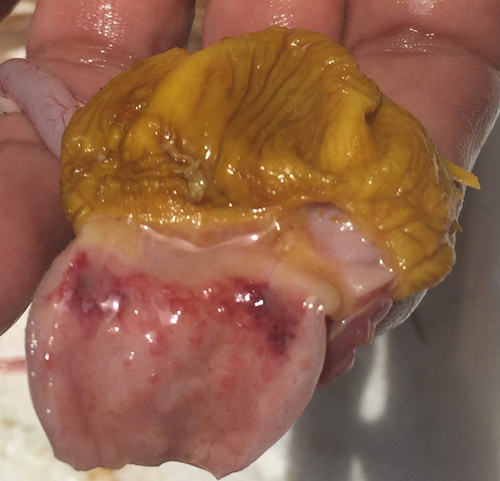
Published on April 16, 2021
Newcastle Disease (ND)
Newcastle disease (ND) is a highly contagious disease of domestic poultry and other bird species considered of major importance worldwide. The disease has become enzootic in many regions of the world and has a huge global impact in the poultry industry because of production losses in case of outbreak. Occurrence must be reported to the OIE if some defined criteria for virulence are met, and can lead to trade restrictions.
Newcastle Disease is caused by strains of one serotype designated avian paramyxovirus-1 (APMV-1). Strains are classified according to their virulence in pathotypes: asymptomatic (inapparent enteric infection), lentogenic (inapparent or mild respiratory infection), mesogenic (respiratory infection with possible neurologic signs) and velogenic (severe respiratory and nervous symptoms or gastrointestinal signs, causing high mortality).
NDV is transmitted airborne, by direct contact with secretions from infected birds (faeces or respiratory discharges) or indirect contact through contaminated feed, water, litter, equipment or people.
The virus may be destroyed by usual disinfectants but can survive for several weeks in organic matter.
Clinical signs
Clinical signs vary widely and appear rapidly after exposure to virus, and depend on pathotype and age, young birds being the most susceptible.
Respiratory signs range from mild to severe: eye swelling, difficult breathing, coughing and rales and may be accompanied by nervous signs like tremors, birds moving in circles, paralysis and twisted necks. Watery greenish diarrhoea is frequently observed. Mortality is variable but can reach 100 % in virulent Newcastle Disease.
In layer flocks, production can drop to 50 % or lower. Eggs may be deformed and show different shell defects (thin-shelled, rough, pale colour in brown eggs).
Gross lesions are not specific to ND and depend also on strain and pathotype. Tracheitis, pneumonia and aerosacculitis are the main lesions found in the respiratory tract. Virulent viscerotropic NDV produce haemorrhages in many organs, commonly intestine, cecal tonsils, proventriculus (gizzard junction) and ovaries.

Haemorrhages of the organs caused by NDV
Diagnosis
Since clinical signs and gross lesions are not pathognomonic and vary widely with virus strain, suspicion of the disease should be confirmed by virus isolation from tissues and oropharyngeal or cloacal swabs.
Currently, RT-PCR is becoming a common and suitable test for screening and confirmation.
Serology (HI, ELISA) can help to diagnosis, if increase in paired serum samples is observed. These techniques have limitations for diagnosis: most of available ELISA kits cannot differentiate between field infection and vaccination. However, they are helpful as a monitoring tool to test response to vaccines
Control and vaccination
There is no treatment for Newcastle Disease: strict biosecurity is essential to prevent introduction of the virus. When the disease appears in an area where it is not enzootic, eradication by stamping out is the primary control strategy in many countries.
Different types of vaccines are available:
- Live-attenuated vaccines: lentogenic (e.g. Hitchner B-1, La Sota, VG/GA…) or mesogenic (e.g. Roakin). They can be used by mass vaccination (drinking water, spray) or individually (eye drop).
- Inactivated vaccines: commonly used after live vaccines for boosting and longer protection but also in combination with live vaccines from early age in endemic areas.
- Recombinant vaccines HVT-based: they can be administered the day of hatch, but it takes about 4 weeks to develop significant immunity. In high ND challenge areas, additional live vaccines are required for proper protection.
Vaccination programs against ND should be adapted to field and challenge conditions. When risk of ND infection is significant, live vaccines can be given at regular intervals in production to maintain immunity.
Keep in mind that vaccines provide protection from clinical signs and minimize losses, but do not protect against infection or virus shedding. Vaccine failure is usually consequence of improper administration leading to significant % of the flock not immunized.
References
- MSD Animal Health Belgium, picture of bird with twisted neck (typical sign of Newcastle disease)
